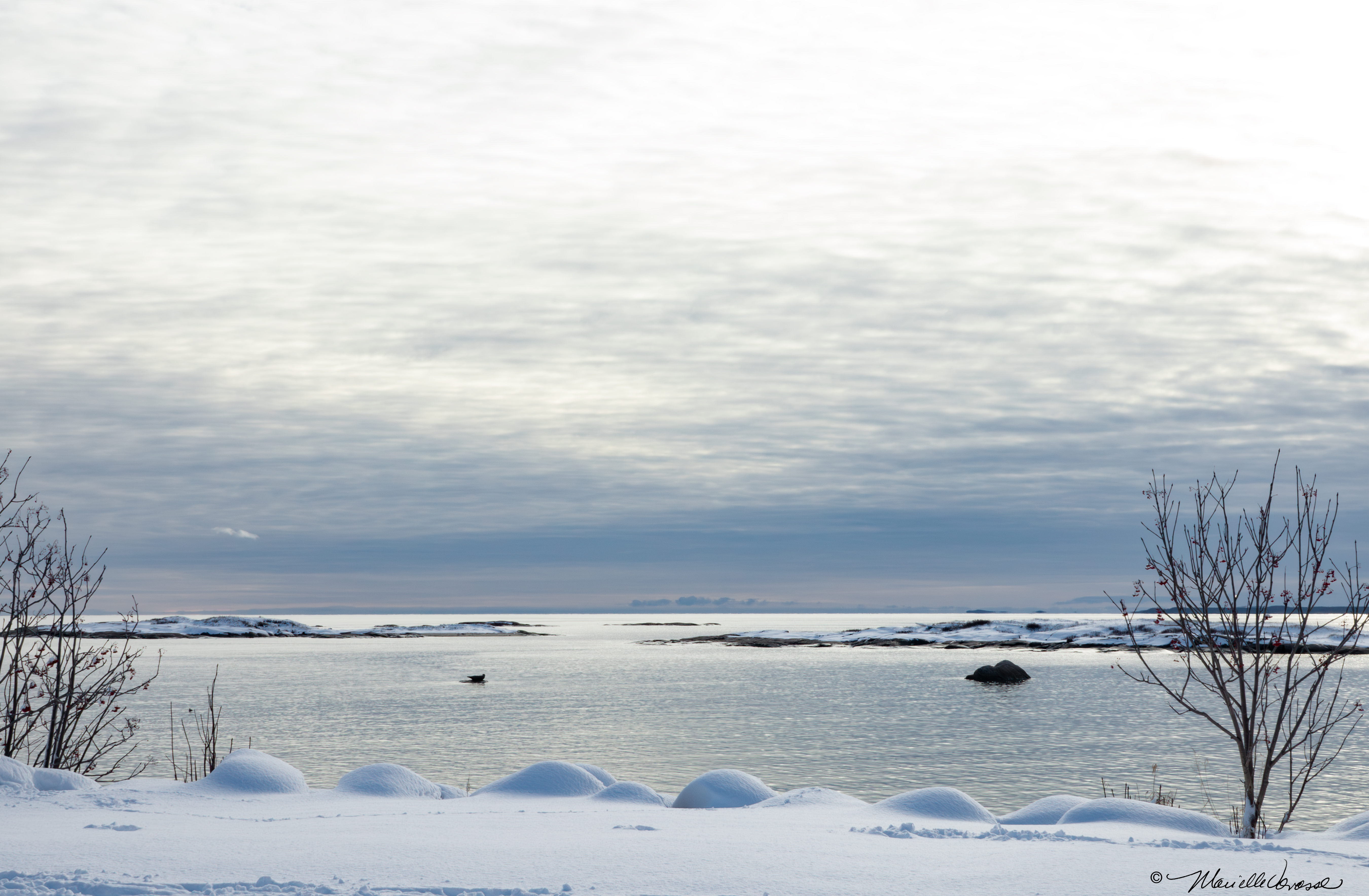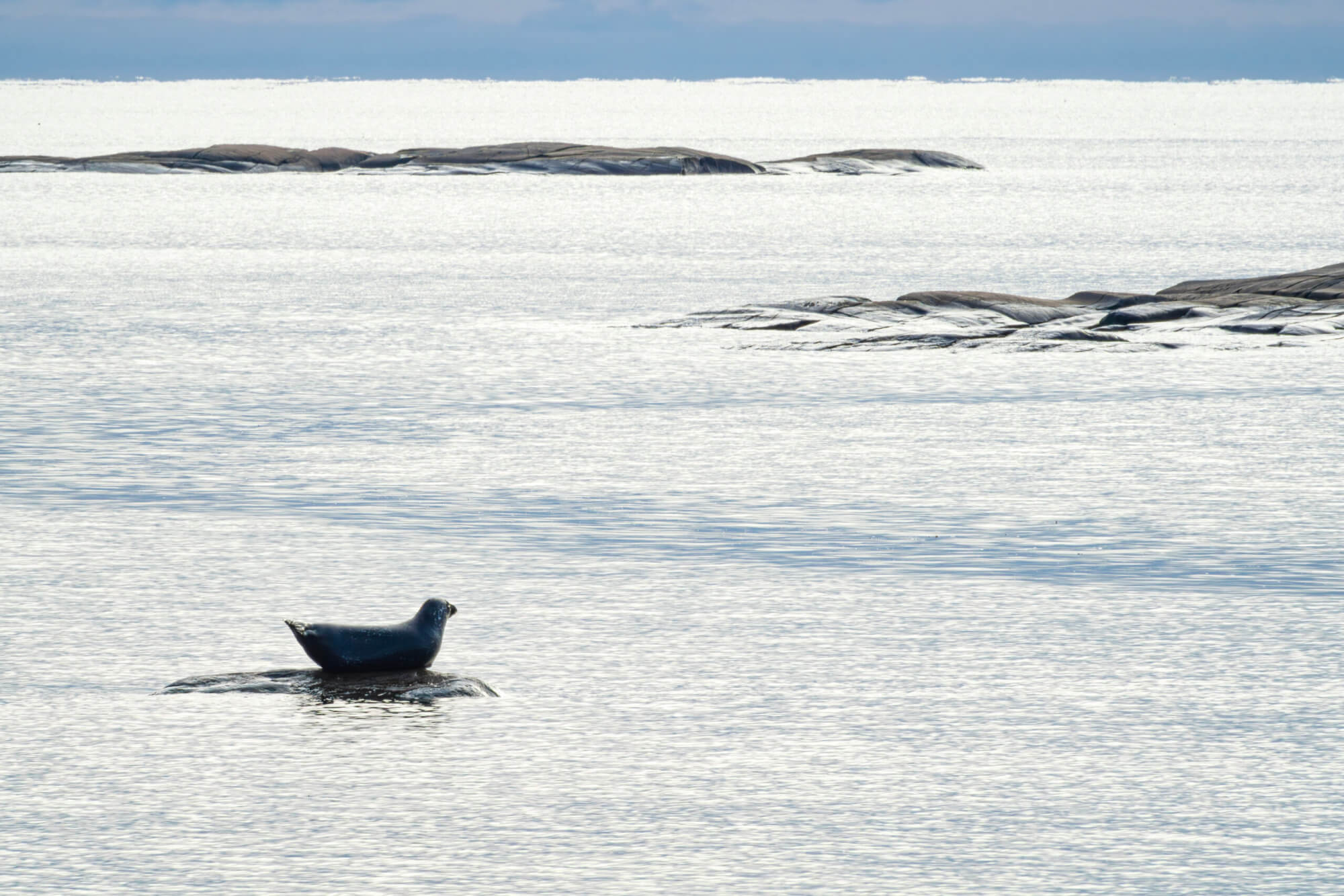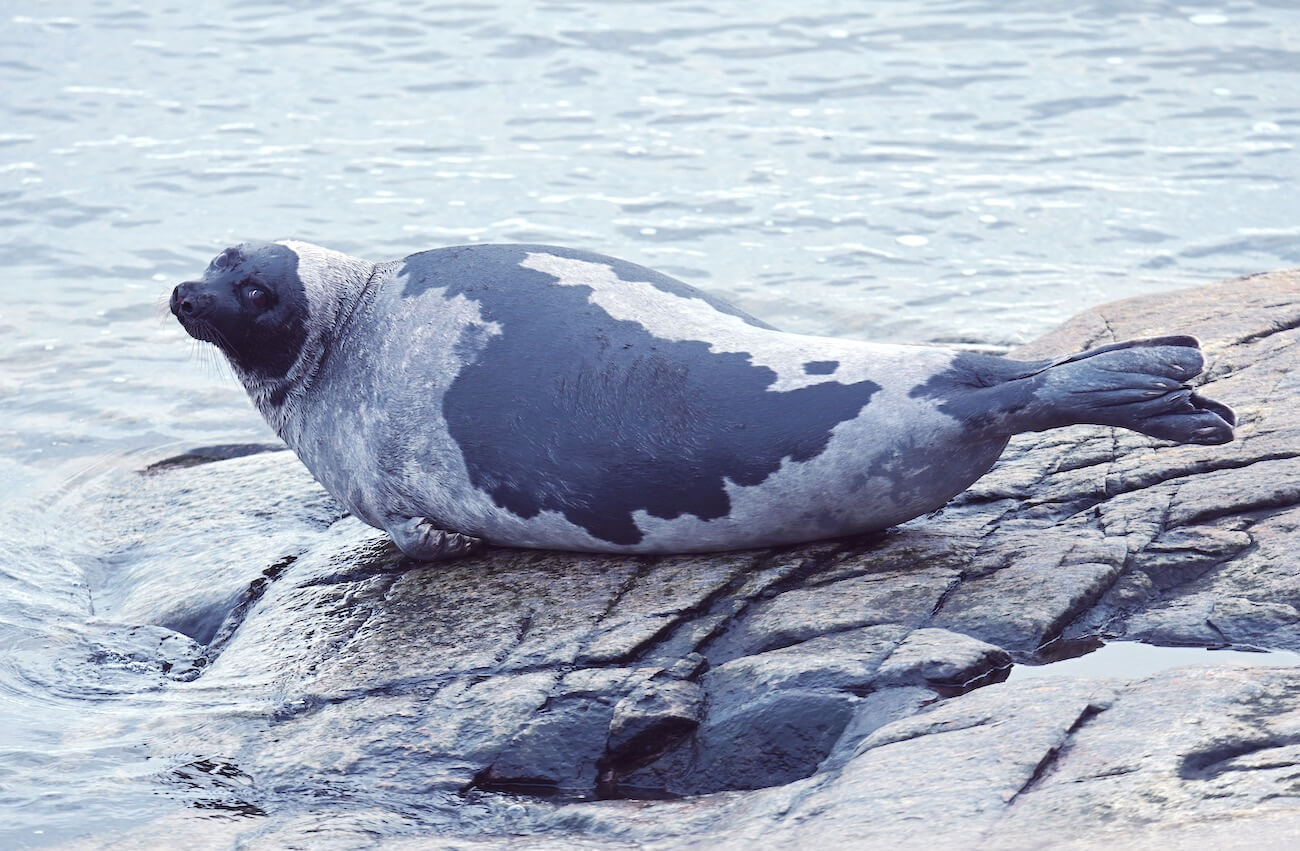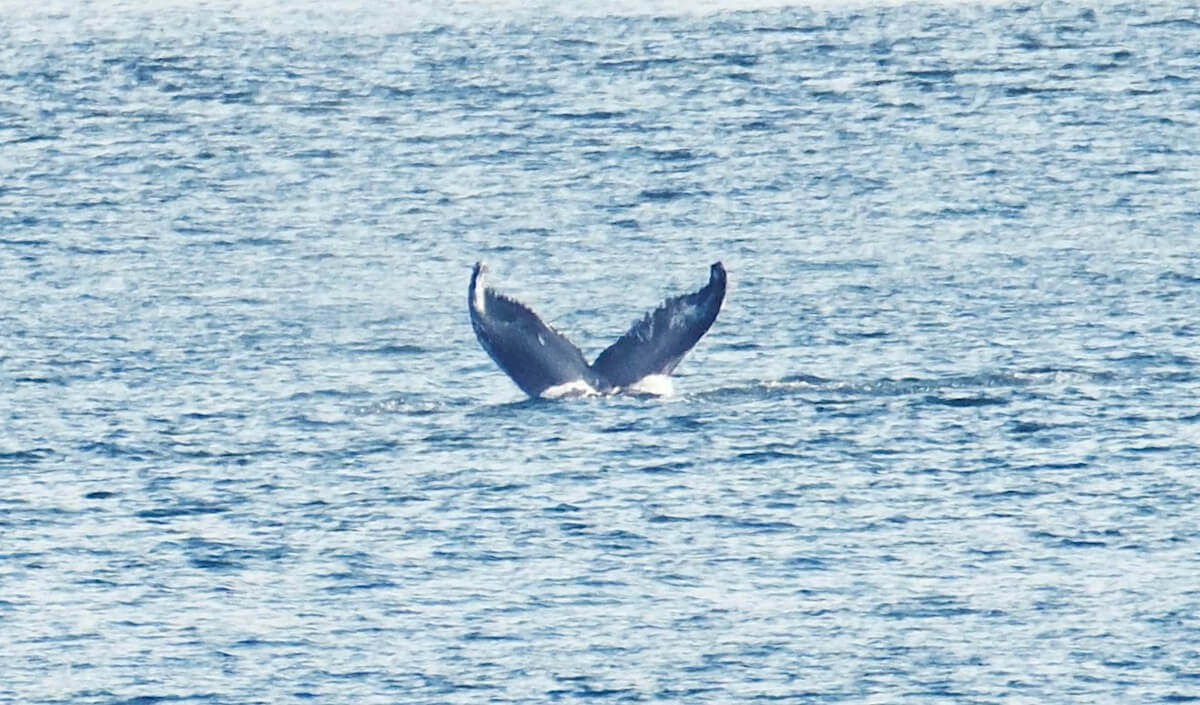Although sightings are beginning to taper off in the gulf, the estuary is still abuzz with the resonating spouts of humpbacks and fin whales. Harbour porpoises, belugas, minke whales and seals are the new stars of the sector, wowing those who are lucky enough to see them in action.
In terms of large whales, things have been rather quiet lately around Franquelin, according to local residents. A few minke whales, harbour porpoises and seals make up the marine fauna observed from the area’s riverbanks.
From Port-Cartier, a resident takes the time to admire a harbour seal on the shore, which practically seems to be posing in order for her to capture a good photo. “It was alone and seemed to be enjoying itself, occasionally glancing at a nearby red-breasted merganser that was meandering through a calm sea and a very zen atmosphere.”
In Sept-Îles, five grey seals and a hundred or so harbour porpoises have been peacefully swimming offshore in recent days. This small gregarious cetacean teams up with its peers to feed. Highly mobile, members of this species do not hesitate to travel considerable distances in search of food. As winter approaches, we begin to wonder where they will spend the colder months. Although their migration patterns are poorly known, we do know that they move farther offshore to avoid the ice, though some individuals may linger in the estuary. Will we see porpoises this winter?
“A brief glimpse of a back”
From Tadoussac, although the tourist season is now over, the whales do not seem to be in any particular hurry to leave the sector. For those folks that are still in the area, witnessing these magnificent cetaceans is a sight to behold: “Yesterday we were lucky enough yesterday to see a minke whale […], it’s good to know that they’re still here! These are precious moments to share with others, too, to cry out with excitement, even if all you get is a quick glimpse of the whale’s back.” As for minke whales, one individual recently made its presence known by breaching three times in Tadoussac Bay.
Belugas plying the waters of the Saguenay Fjord have been regularly reported, whether from ferries or from either bank of the watercourse. On the surface, these white whales are not the fastest of swimmers. They therefore often use the currents to help them get to where they’re going. This is why sightings of this species in the Saguenay often coincide with the tides! No need to be an expert to recognize them, just to be able to make out white spots on the water surface. In calm weather, this is pretty straightforward. It’s when the weather takes a turn for the worst that identification becomes more challenging, as these animals can easily be confused with the waves.
Interestingly, a solitary harp seal approached the docks of the village of Tadoussac a few times this week, even going so far as to make itself comfortable there. Adults of this species can be recognized by the black pattern on their back.
A humpback whale has been regularly swimming off Cap de Bon-Désir in Les Bergeronnes. “It doesn’t really seem to want to leave,” notes one observer. The dorsal fins of a few harbour porpoises are also spotted in the area.
During a busy weekend for observations, one marine mammal enthusiast from Les Escoumins tallied around 20 harbour porpoises, in addition to observing a minke whale. The next day, she had the chance to admire a humpback whale and a grey seal.
Giants of today and yesteryear
Large rorquals are still swimming in the waters of the Saguenay-St. Lawrence Marine Park, even if they seem to be more discreet. On the other hand, they are reported less often because there are fewer boats on the water to notice them! There are currently up to six humpback and three fin whales still present in Marine Park waters, including well-known individuals such as Guadeloupe, Irisept, Cocotte, Fleuret and Ti-Croche.
While these behemoths cruising our waters today are certainly impressive, it appears that a marine mammal that roamed the seas some 40 million years ago might have actually surpassed them in terms of mass! Perucetus colossus, a species whose bones were recently discovered in Peru, is believed to have weighed between 85 and 340 tonnes. This giant would therefore have been heavier than a blue whale, individuals of which can tip the scales at up to 190 tonnes.
Thanks to all our collaborators!
Special thanks go out to all our observers who share their love for marine mammals with us! Whether it’s every week or just a few times throughout the summer, the stories of your encounters with cetaceans and pinnipeds are always a pleasure to read and discover.
On the water or from shore, it is your eyes that give life to this column.
Gilles Bouchard
André Bujold
Marie-Andrée Charlebois
Michel Comeau
Guylaine Côté
Laetitia Desbordes
Julie Deschênes
Jacques Gélineau
Amber Gibson
Guylaine Marchand
Diane Ostiguy
Sandrine Papias
Renaud Pintiaux
Pascal Pitre
Jean Roy
René Roy
Jessé Roy-Drainville
Guillaume Savard
Andréanne Sylvain
David Turgeon
Marielle Vanasse
And all those we left out!
Additionally, we would like to acknowledge the following teams that also share their sightings:
Station de recherche des iles Mingan (MICS)
Réseau d’observation des mammifères marins (ROMM)
Réseau québécois d’urgence pour les mammifères marins (RQUMM)
Groupe de recherche et d’éducation sur les mammifères marins (GREMM)
Would you also like to share your observations?
Have you seen any marine mammals in the St. Lawrence? Whether it’s a spout offshore or just a couple of seals, drop us a line and send your photos to [email protected]!









